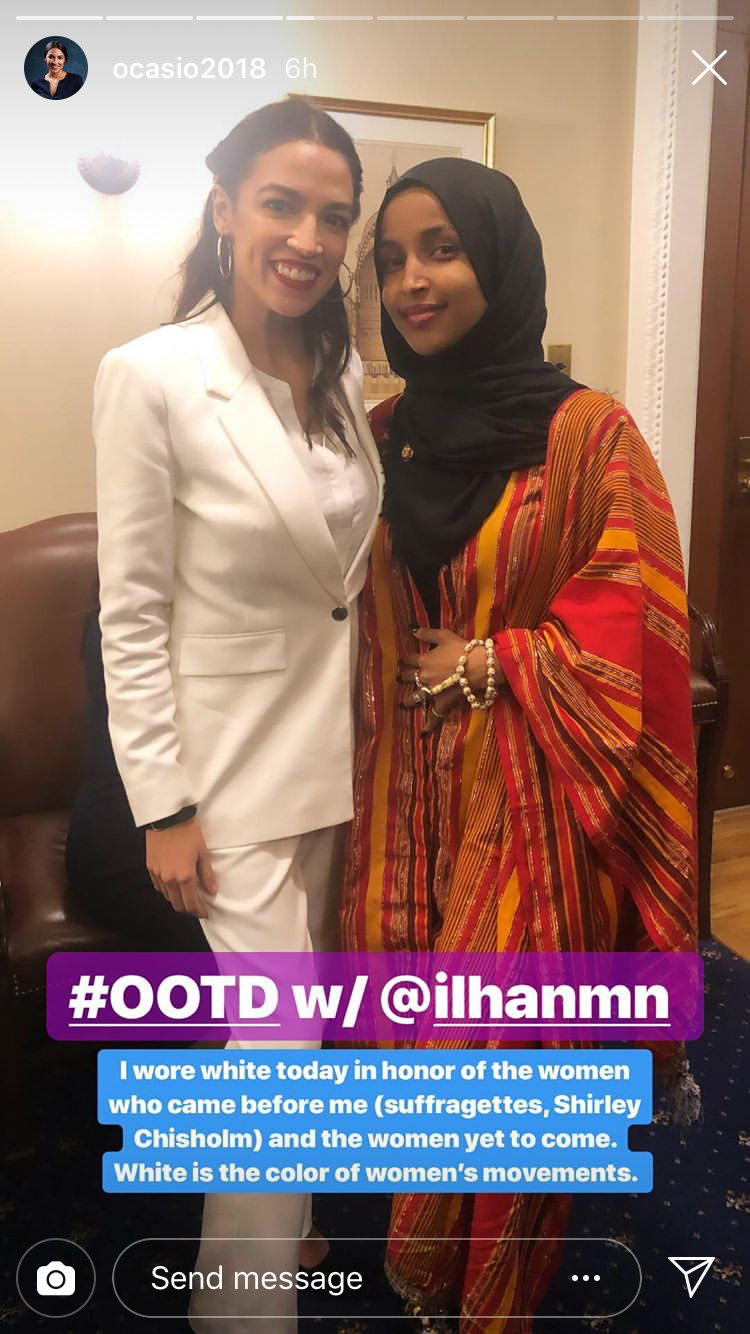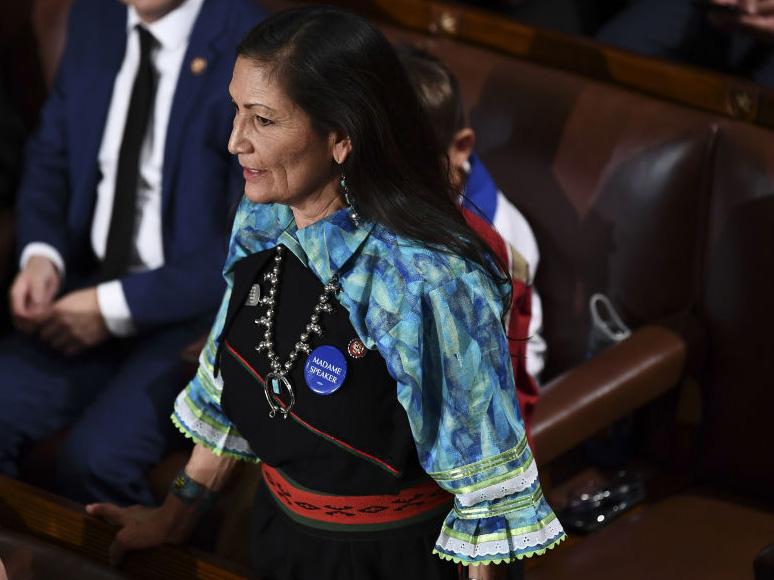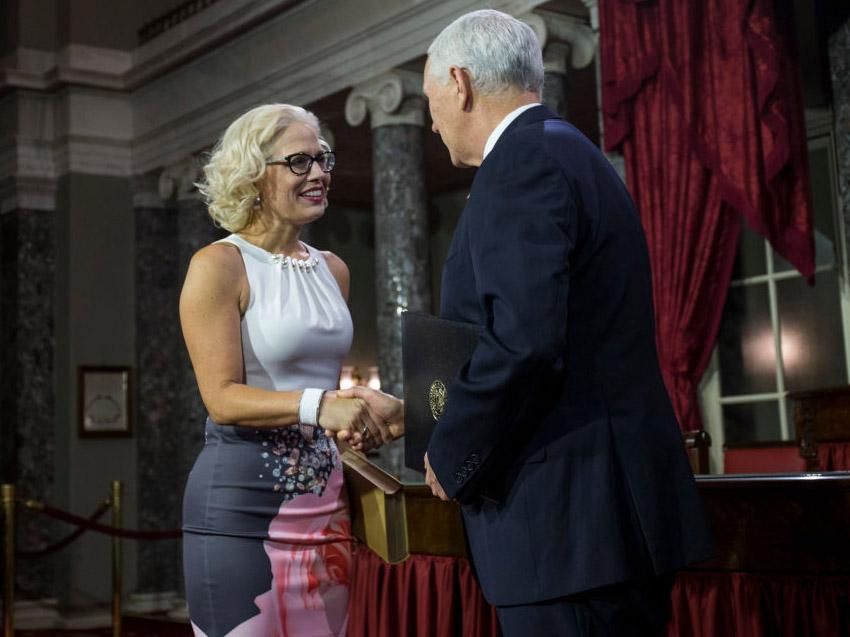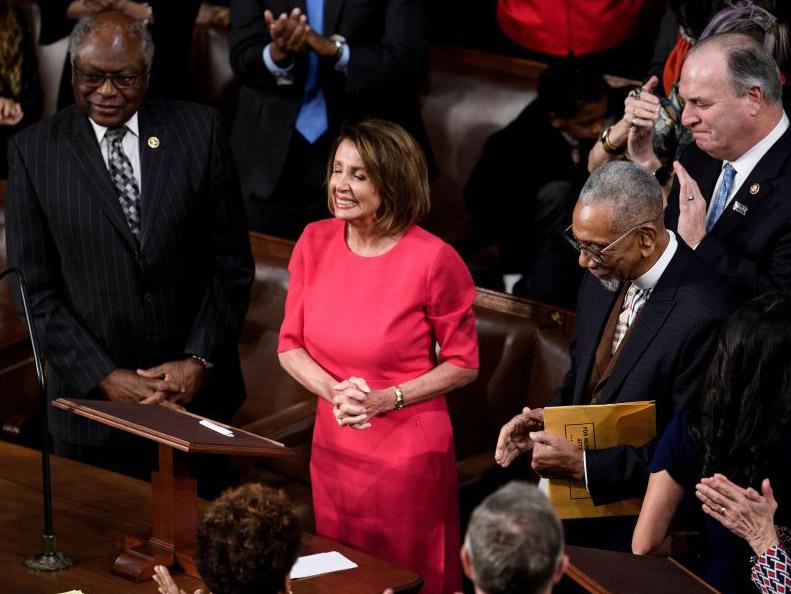What Congresswomen wore yesterday and why each outfit's symbolism matters
Proving there's far more to fashion than meets the eye

Your support helps us to tell the story
From reproductive rights to climate change to Big Tech, The Independent is on the ground when the story is developing. Whether it's investigating the financials of Elon Musk's pro-Trump PAC or producing our latest documentary, 'The A Word', which shines a light on the American women fighting for reproductive rights, we know how important it is to parse out the facts from the messaging.
At such a critical moment in US history, we need reporters on the ground. Your donation allows us to keep sending journalists to speak to both sides of the story.
The Independent is trusted by Americans across the entire political spectrum. And unlike many other quality news outlets, we choose not to lock Americans out of our reporting and analysis with paywalls. We believe quality journalism should be available to everyone, paid for by those who can afford it.
Your support makes all the difference.Representing the new face of politics with more young, non-white, LGBT+ and female members than ever before, the 116th Congress made history yesterday by swearing in a record 127 women.
The sartorial choices of this diverse group of women in the House of Representatives has been making headlines with many of them choosing to use fashion as a symbolic feminist tool.
From white suits and form-fitting pink dresses, to Native American regalia, a Palestinian thobe and a hijab, the women chose clothing with hidden meaning or that represented their culture.
Here, we take a look at some of the best style moments from the swearing-in ceremonies of the US House and Senate and the secret symbolism behind each outfit.
Alexandria Ocasio-Cortez

As she was sworn in as the youngest ever US Congresswoman for New York’s 14th congressional district, Alexandria Ocasio-Cortez sported a tailored white trouser suit.
The 29-year-old wore trousers with a matching blouse and jacket, choosing to accessorise with large hoop earrings and a bold red lip.
But, there’s more to Ocasio-Cortez’s outfit choice than meets the eye. The congresswoman confirmed on Instagram that her decision to wear white was in fact a reference to the long history of women’s suffrage.
In 1908, Votes for Women editor Emmeline Pethick-Lawrence introduced the movement’s official colour scheme: white to represent purity, green for hope and purple for loyalty and dignity.

“I wore white today in honour of the women who came before me (suffragettes, Shirley Chisholm) and the women yet to come,” she wrote.
“White is the colour of women’s movements.”
Ilhan Omar

On Thursday, Ilhan Omar, who was elected to the Minnesota House of Representatives, became the first member of the US Congress to wear a hijab.
Accompanied by her father, husband, and three children, Omar came to the chamber wearing a red and orange-dyed traditional Somali turban and was later sworn in donning a black one.
Rules were changed to allow Omar to wear the religious head covering with the removal of a 181-year-old ban on headwear of any type in the chamber.
“No one puts a scarf on my head but me,” she tweeted last November.
“It’s my choice – one protected by the first amendment. And this is not the last ban I’m going to work to lift.”
Rashida Tlaib

Rashida Tlaib of Michigan, one of the first Muslim-American women to be elected to Congress, wore a traditional Palestinian robe on Thursday.
Tlaib wore a traditional thobe – a hand-embroidered gown that comes in a range of designs and colors, and often signifies the village from where the wearer hails – which was stiched by her mother.
Many Palestinian women own at least one of these special dresses and wearing them is seen as a show of pride for their culture and heritage.
In response, a number of women and girls also wore their thobes as part of a social media campaign to honor the Michigan Democrat with many sharing photos on Twitter and Instagram with #TweetYourThobe.
Deb Haaland

Deb Haaland, a representative from New Mexico and one of the first Indigenous women to be elected to Congress, wore a traditional Pueblo dress on Thursday as she was sworn in.
She also expressed her Native American heritage by wearing moccasins and silver and turquoise jewellery.
Haaland shared photos of her outfit on Twitter before the ceremony, writing: “New Mexicans are in the house, the US House that is.”
Barbara Lee

African American congresswoman Barbara Lee, the U.S. Representative for California’s 13th congressional district, chose to wear a jacket made from traditional kente cloth as she was sworn in on Thursday.
Kente cloths – a type of silk, cotton, or rayon fabric made of interwoven colourful strips which originate from the Ashanti people of Ghana - were previously worn by black members of Congress at the 2018 State of the Union address in protest of disparaging statements made by Donald Trump about African countries.
Kyrsten Sinema

Yesterday, Kyrsten Sinema from Arizona became the first openly bisexual senator in US history, and the second LGBT+ senator.
For her entrance to the Senate, Sinema wore a pink ensemble consisting of a form-fitting floral pencil skirt, white pin-tucked blouse, pink coat and grey fur stole.
Many have speculated the outfit was chosen as a rejection of stuffiness and a celebration of the LGBT+ community staking a place in Congress.
Nancy Pelosi

Democratic representative Nancy Pelosi was sworn in as the House Majority Leader, once again, on Thursday and reclaimed her gavel as Speaker of The House.
To mark the occasion, Pelosi stood out in a sea of grey suits with a hot pink asymmetrical dress.
A colour that was recently adopted by the “pussyhat project” in protest against Trump’s presidency, Pelosi’s choice was by no means a coincidence.
The outfit was quickly picked up by The New York Times, which tweeted: “Nancy Pelosi, wearing a hot pink dress, ascended to the marble dais in the center of the House chamber to accept the wooden gavel”.
However, the tweet was quickly removed after people accused the comment as sexist coverage toward female politicians.
Join our commenting forum
Join thought-provoking conversations, follow other Independent readers and see their replies
Comments